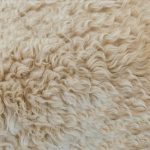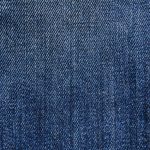Are you curious about what Swiss lace fabric is? Well, you’re in the right place!
In this article, we’ll explore the history, characteristics, types, and manufacturing process of Swiss lace fabric.
You’ll also discover the various uses of this exquisite fabric and learn how to care for it.
So, if you’re ready to delve into the world of Swiss lace fabric, let’s get started!
Table of Contents
History of Swiss Lace Fabric
If you’re interested in the history of Swiss lace fabric, you’ll be fascinated to learn about its origins and evolution over the years. Swiss lace fabric, also known as Swiss embroidery, has a rich history that dates back to the 15th century. It originated in Switzerland and quickly gained popularity for its intricate and delicate designs.
The evolution of Swiss lace fabric can be traced through various stages. In the beginning, it was handmade using a needle and thread, but with advancements in technology, machine-made lace became more prevalent. Today, Swiss lace fabric is produced using computerized machines, which allow for more complex and precise designs.
The cultural significance of Swiss lace fabric cannot be understated. It has long been associated with elegance and luxury, and is often used in high-end fashion and bridal wear. Swiss lace fabric is also deeply rooted in Swiss traditions and craftsmanship, representing the country’s attention to detail and precision.
Over the years, Swiss lace fabric has become an internationally recognized symbol of quality and craftsmanship. Its evolution from handmade to machine-made has allowed for greater accessibility and affordability, while still maintaining its intricate and delicate beauty. Whether used in fashion or home decor, Swiss lace fabric continues to captivate and inspire with its timeless charm.
Characteristics of Swiss Lace Fabric
When you’re looking for a delicate and intricately detailed material, it’s hard to beat the charm of Swiss lace fabric. This exquisite fabric is known for its intricate patterns and delicate beauty. Swiss lace fabric is made using a special weaving technique that creates small holes and intricate designs, giving it a unique and elegant look.
One of the key characteristics of Swiss lace fabric is its durability. Despite its delicate appearance, the fabric is surprisingly strong and long-lasting. It can withstand regular wear and tear without losing its shape or beauty. This makes it a popular choice for creating stunning outfits that can be worn for special occasions or everyday wear.
The versatility of Swiss lace fabric is another reason why it is so popular. It can be used to create a wide range of garments, from dresses and blouses to accessories like scarves and handkerchiefs. The intricate patterns and delicate nature of the fabric make it a favorite among designers who want to add a touch of elegance and sophistication to their creations.
To give you a better understanding of the beauty and versatility of Swiss lace fabric, here is a table showcasing some popular Swiss lace patterns and their characteristics:
| Pattern | Description |
|---|---|
| Floral | Features intricate floral designs, perfect for feminine and romantic garments |
| Geometric | Consists of geometric shapes and patterns, adding a modern and contemporary touch |
| Paisley | Known for its intricate and swirling designs, giving a bohemian and exotic vibe |
| Scallop | Features scalloped edges, adding a delicate and feminine touch to any garment |
| Abstract | Consists of unique and artistic designs, perfect for creating statement pieces |
Types of Swiss Lace Fabric
When it comes to Swiss lace, there are several popular types that you should be aware of. Understanding the differences between these types can help you make an informed decision when choosing lace for your projects.
In this discussion, we will explore the most common Swiss lace types and how to differentiate between them.
Popular Swiss Lace Types
You should check out the popular Swiss Lace types. Swiss Lace fabric is known for its delicate and intricate patterns, making it a popular choice for various applications.
One of the reasons why Swiss Lace is so popular is because it comes in different colors, allowing you to find the perfect match for your project. Whether you are looking for a classic white or a vibrant red, there is a Swiss Lace type that will suit your needs.
In terms of pricing options, Swiss Lace can range from affordable to high-end, depending on the quality and intricacy of the design. Regardless of your budget, you can find a Swiss Lace type that meets your requirements and adds a touch of elegance to your project.
Differentiating Swiss Lace
To differentiate between various types of Swiss Lace, you can look for differences in their delicate patterns and color options. Swiss Lace is known for its intricate designs and high-quality construction, making it a popular choice for lace fabrics.
Here are some distinguishing features and benefits of Swiss Lace:
-
Delicate Patterns:
Swiss Lace is characterized by its fine and intricate patterns, often featuring floral or geometric designs. The patterns are carefully woven into the fabric, creating a beautiful and elegant look. -
Color Options:
Swiss Lace is available in a wide range of colors, allowing you to find the perfect match for your project. From classic white and ivory to bold and vibrant hues, there is a color option to suit every style and preference.
The distinguishing features and versatile color options of Swiss Lace make it a highly desirable fabric for various applications, including clothing, accessories, and home decor. Its beauty and craftsmanship can elevate any design and add a touch of elegance.
How Swiss Lace Fabric Is Made
Swiss lace is known for its intricate and delicate design, making it a popular choice for high-quality lace products. Understanding the lace production process can give you insight into the craftsmanship and attention to detail that goes into creating Swiss lace.
Lace Production Process
Take a moment and consider how lace fabrics are produced. Lace manufacturers play a vital role in creating these intricate and delicate fabrics. The production process involves several steps that require skill and precision. Here is a breakdown of the lace production process:
-
Design and Pattern Making:
-
Lace patterns are carefully designed using specialized software or hand-drawn by skilled artisans.
-
The patterns are then transferred onto graph paper or digital templates, which serve as guides for the production process.
-
Fabric Preparation:
-
Lace fabrics can be made from various materials such as cotton, silk, or synthetic fibers.
-
The chosen fabric is prepared by washing, bleaching, and starching to ensure it is clean and stable for the next steps.
-
Weaving or Knitting:
-
The prepared fabric is then fed into lace machines that weave or knit the lace pattern onto the fabric.
-
These machines use intricate mechanisms to create the desired lace pattern, often controlled by computer programs.
-
Finishing:
-
After the lace pattern is woven or knitted, the fabric goes through a finishing process that includes washing, drying, and steaming.
-
This process helps to enhance the appearance and quality of the lace fabric.
Swiss Lace Characteristics
Now that you understand the lace production process, let’s delve into the characteristics of Swiss lace fabric.
Swiss lace is renowned for its exceptional quality and intricate design. It is produced using the finest materials and meticulous craftsmanship in Switzerland.
The production of Swiss lace involves weaving threads together in a delicate pattern, creating a fabric that is lightweight, breathable, and durable. The attention to detail in the production process ensures that each strand is perfectly aligned, resulting in a flawless and seamless appearance.
The quality of Swiss lace is unparalleled, making it highly sought after in the fashion industry. Whether used in clothing, accessories, or home decor, Swiss lace adds a touch of elegance and sophistication to any design.
Importance of Swiss Lace
You might be surprised by the significance of this intricate and exquisite material in the fashion industry. Swiss lace fabric holds a special place in the hearts of designers and fashion enthusiasts alike. The importance of Swiss lace cannot be overstated, as it brings numerous benefits to the table.
Here are a few key reasons why Swiss lace is highly regarded:
-
Superior quality: Swiss lace is known for its exceptional craftsmanship and attention to detail. It is meticulously woven with precision, resulting in a fabric that is both delicate and durable.
-
Versatility: Swiss lace can be used for a variety of purposes, from elegant evening gowns to delicate lingerie. Its versatility allows designers to create unique and intricate designs that stand out.
-
Breathability: The delicate nature of Swiss lace allows for excellent air circulation, making it a comfortable choice for warm weather garments.
-
Timelessness: Swiss lace has stood the test of time and continues to be a popular choice in the fashion industry. Its timeless appeal ensures that garments made with Swiss lace will remain fashionable for years to come.
Uses of Swiss Lace Fabric
Swiss lace fabric is commonly used in the fashion industry for creating intricate and delicate designs. It has become a popular choice for designers due to its versatility and timeless elegance. In recent years, fashion trends have seen an increased use of Swiss lace fabric in various garments, such as dresses, blouses, and even accessories like scarves and headbands. The delicate patterns and sheer quality of the fabric add a touch of femininity and sophistication to any outfit.
Not only is Swiss lace fabric a staple in the fashion world, but it also offers advantages when used in home decor. Its lightweight and breathable nature make it ideal for curtains and window treatments, allowing natural light to filter through while still providing privacy. Additionally, Swiss lace fabric can be used to create beautiful tablecloths, placemats, and napkins, adding an elegant touch to any dining setting.
Care and Maintenance of Swiss Lace Fabric
To keep your delicate lace in good condition, it’s important to gently hand wash and air dry it. Swiss lace fabric requires special care to maintain its intricate beauty. Follow these care tips and cleaning techniques to ensure the longevity of your Swiss lace garments:
-
Hand washing: Fill a basin with lukewarm water and add a mild detergent specifically designed for delicate fabrics. Gently swirl the lace garment in the soapy water for a few minutes, being careful not to agitate or rub the fabric too vigorously. Rinse the lace thoroughly with cool water to remove all traces of detergent.
-
Drying: Lay the lace garment flat on a clean, absorbent towel. Gently roll the towel, pressing lightly to remove excess water. Avoid wringing or twisting the lace fabric, as this can damage its delicate fibers. Once most of the moisture is removed, carefully unfold the garment and lay it flat on a drying rack or clean, dry towel. Allow it to air dry completely, away from direct sunlight and heat sources.
Conclusion
In conclusion, Swiss lace fabric is a beautiful and delicate material with a rich history. Its intricate patterns and soft texture make it perfect for a variety of uses, from fashion to home decor.
Whether it’s used in dresses, curtains, or tablecloths, Swiss lace fabric adds an elegant touch to any design. Taking care of Swiss lace fabric is essential to preserve its beauty, so be sure to follow the proper maintenance guidelines.
With its timeless appeal, Swiss lace fabric is sure to continue captivating people for years to come.
- Tetron Fabric for Marine Applications: Durability and Use Cases - June 18, 2025
- Tetron Fabric for Outdoor Furniture: Weather Resistance and Care - June 18, 2025
- Tetron Fabric for Wall Coverings: Style and Application Tips - June 18, 2025




